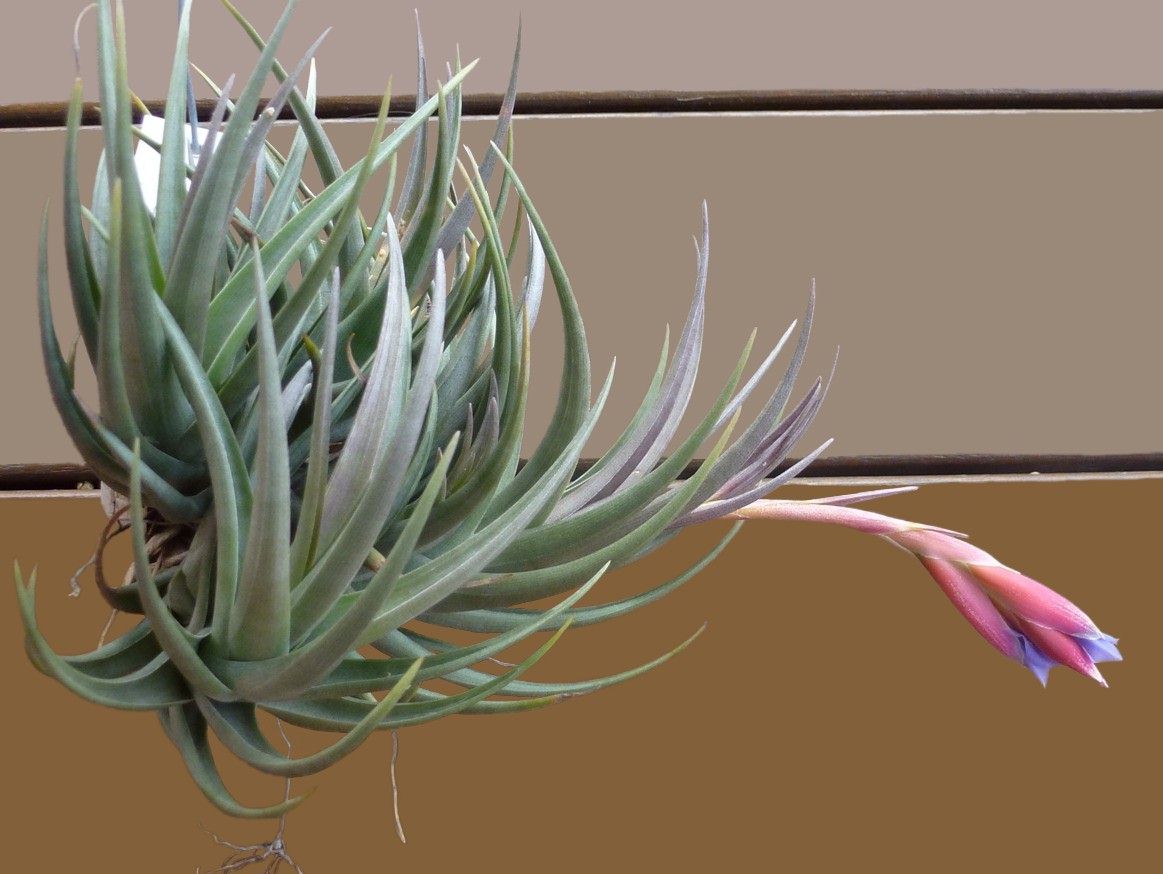
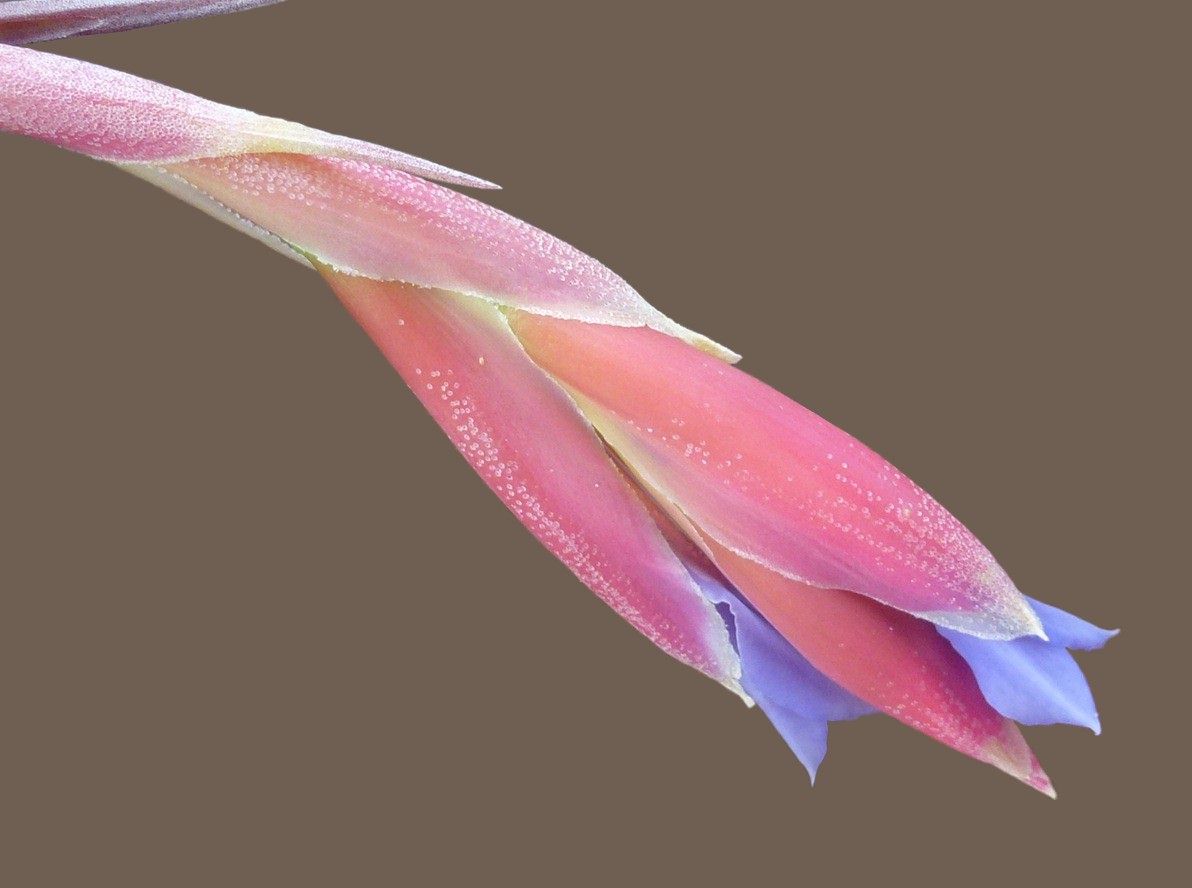
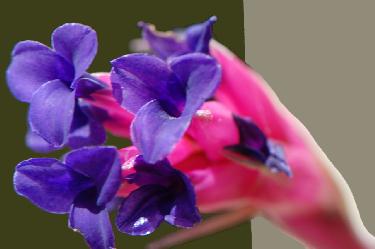
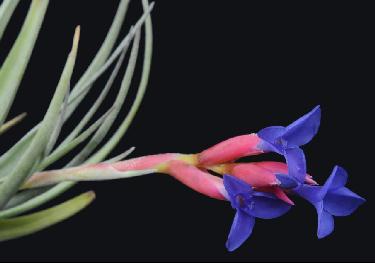
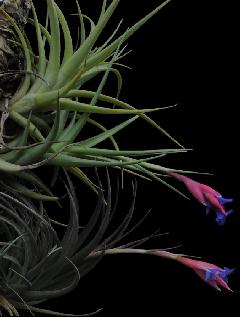
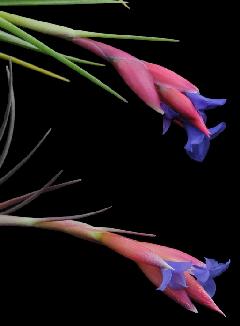
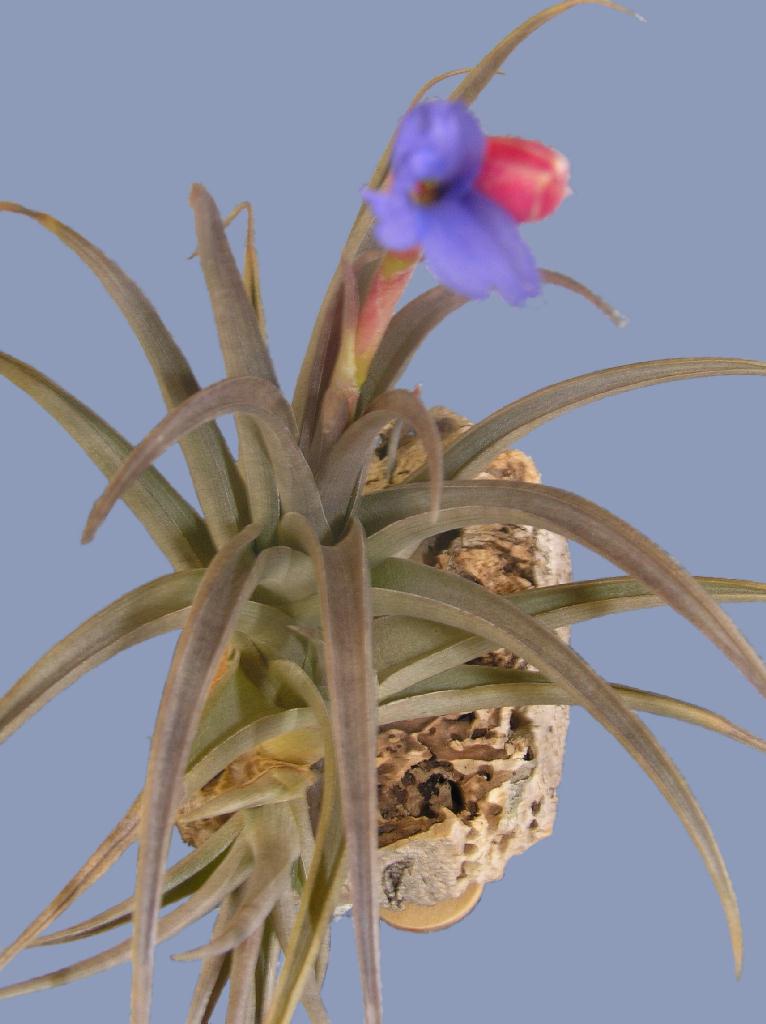
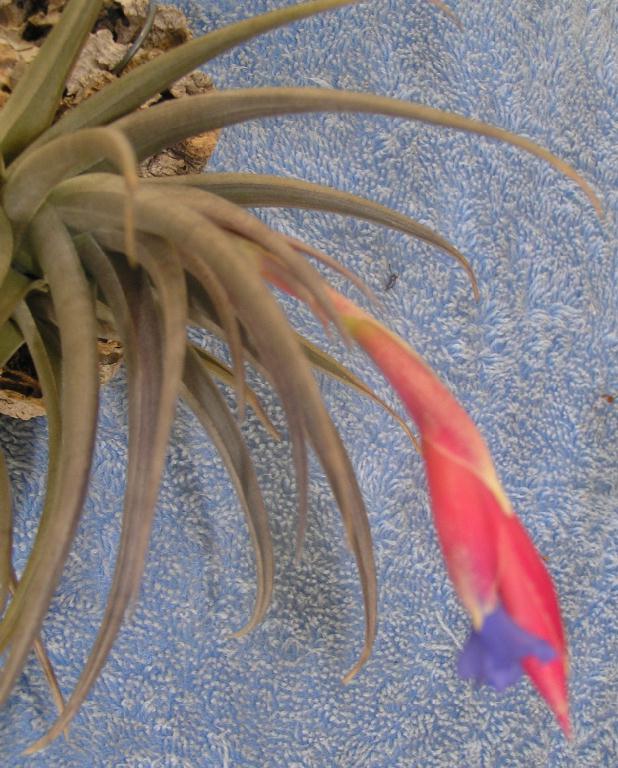
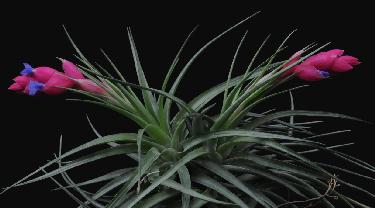
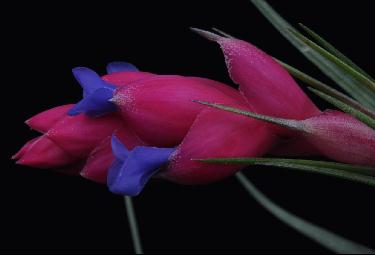
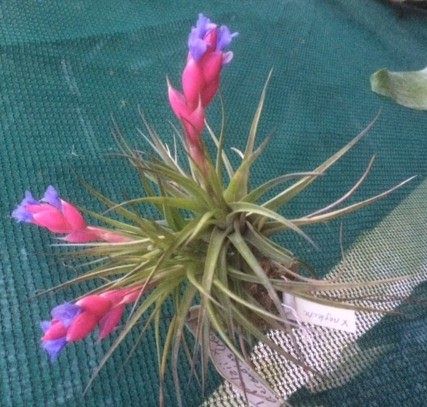
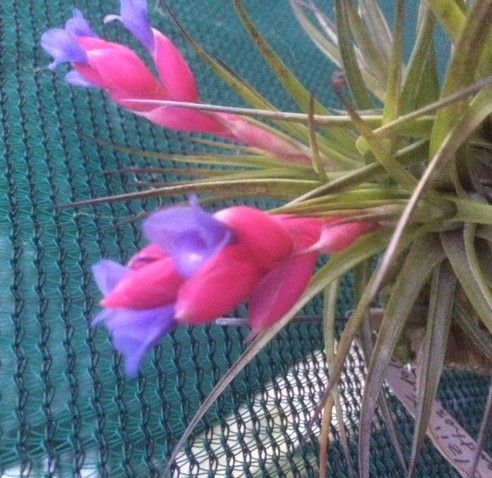
| It has been decided the polzii was actually bella and this hybrid registered as T. Holm's Azurite. |
Plant flowering to 25cm. high, epilythic, growing in dense clumps, short stemmed.
Leaves somewhat numerous (ca 10 – 15), laxly polystichous, distinctly secund, 6-11 cm long, both sides dense grey lepidote.
Sheath 3cm long, to 1.7cm wide,elliptic, indistinct, to the glabrous nerved base both sides dense grey scaled, the edges bent and with large asymmetric scales.
Blade to 9cm. long, to 1.3cm wide next to the sheath, narrow triangular, acuminate, arranged outwards like a claw, channelled, the edges strongly bent, leathery.
Scape bending over, well exceeding the leaves, to 10 cm. long, 5mm diam., glabrous.
Scape Bracts laxly imbricate, the scape visible, the lower ones similar to the leaves, the upper ones always short tipped, erect, internodes as long as the sheath.
Inflorescence simple, laxly polystichous with 3 to 6 sessile scent less flowers, 4-5 cm long, 2.5cm. wide, the flowers more or less spreading.
Floral Bracts 2.3 – 3.2 cm. long, exceeding the sepals, 1 – 1.6 cm. wide, oval, acute arched, very thin membraneous with hyaline edges, red, the bottom glabrous, the tip densely lepidote and keeled.
Sepals 2.12 – 2.15 cm long, 5 –6 mm wide, narrow elliptic, acuminate, thin membraneous, glabrous, the posterior pair almost totally joined and with a strong keel thickened at the base.
Petals 3.5 – 3.8 cm long with to 1.1cm. wide, elliptic, acuminate,blade, blue ( # 51 wisteria blue), blades strongly spreading, the bottom white, narrowing to 2mm at base.
Stamens enclosed in the flower, at anthesis visible from above, Filament 1.5 – 1.7 cm long, plicate, ( 1-3 times pleated,untwisted to 2.8 cm long), 1.2mm wide at base, narrowing at the tip, narrow where it joins the anther, very thin ribbon like, white.Anther 4mm long, 0.5 mm wide, linear, joined at base, yellow. Pollen egg yellow. Style 1.7 – 1.9cm long, thin, white. Stigma 2mm high , 2mm wide.Lobes spreading, thin, yellow white. Ovary 3.5 – 4.5mm high, 2.5 – 3mm wide, egg shaped, light green.
Type locality Brazil, State of Rio Grande do Sul, Mina Macaque (between Casapava and Baje), saxicolous, leg. Franz Polz, E Markus & Edmund Kirschnek s.n. 1979.(Holotype HK, Isotype WU)
Differs from T. aeranthos in
1. Leaves fewer, laxly arranged, secund, grey lepidote.
2. Scape longer and bent over.
3. Inflorescence lax with few, more-outspreading not wholly erect flowers.
4. Floral Bracts larger, lower ones acute not filiform, the upper portion denser lepidote and keeled.
5. Sepals much longer.
6. Petals to 3.8 cm long compared to 2.7 cm , the platte to 1cm wide and acuminate, much more spreading, lighter blue.
Named after Franz Polz of Munich
This started almost 17 years ago. Ernst Markus, Edi Kirschnek and I, had already been on two trips to Cactus country in Peru and wanted to see Cactus flora in Brazil. Although confirmed cactus lovers we were also interested in Tillandsias, no miracle, because everyone of us had for many years been friends with the late Alfred Blass. As for knowing Tillandsias, all three of us only had restricted knowledge.
In linguistic sense, we prepared for this trip by getting a small Portuguese/German dictionary because of a lack of knowledge of the Portuguese language. But thanks to overall friendliness and helpfulness, we found it easy. Cactus-wise we could not have done better: we had contacted beforehand with Dirk van Vliet, a Notocactus specialist in Holambra S.P., and had a letter of introduction. This contact rewarded us not only with cordial hospitality but with one durable friendship. After a long welcome and sightseeing in the local area, the friendships we made provided us with great discussions naturewise and also with location information.
First goal was the famous Iguacu Falls in the neighbouring state Parana on the border with Argentina. It is right: this grandiose remarkable area should not be missed by any visitor of Brazil. From the Falls our route went southwards through the state of Santa Catarina across to Rio Grande do Sul, the state of landed estates and gauchos, that is the border of the southern-most state of Brazil to Uruguay. We had already determined that in broad streches of agricultural land we could expect patches of higher ground. In the distance we could see original vegetation along narrow strips by the rivers and in areas inappropriate for farmland. On the other hand, we also found miraculous mountain landscapes with deep canyons, high waterfalls and impressive araucaria forests. We were quite content in finding cactus country that could not be compared with what we had seen in Mexico. We saw lots of tillandsias. In the course of the trip the following were listed in my diary: pohliana, tenuifolia, loliacea, stricta, usneoides, crocata, duratii, lorentziana, gardneri, aeranthos, bergeri, geminiflora and naturally, a number that we could not identify.
Finally we come to the place of discovery of a Tillandsia, whose description by Mrs. Renate Ehlers appears in this Journal: that comes from the south of Rio Grande do Sul, not all that far from the border to Uruguay. The south east highlands of Brazil runs out here into rolling hills, that finally flows into the plains of Parana -Ebene. The area near Mina Macaque, the place of discovery between the provinces of Pacapava do Sul and Baje, a particular feature was a row of lofty rocky knolls of reddish sandstone layers, that had scattered shrubbery. The altitude was about 300 m. In the diary under 6th September at the location of the Tillandsia it shows: aeranthos with question marks and geminiflora. On a night trip to the Tagesziel Baje, Edi Kirschnek thought that the find could be something new; a good clue because I did not trade him for it.